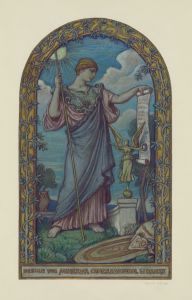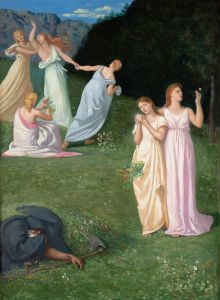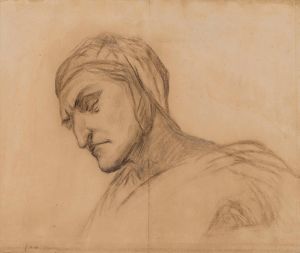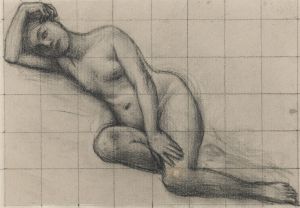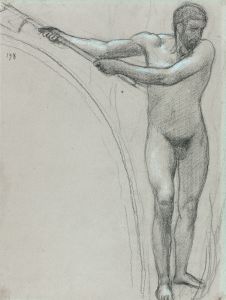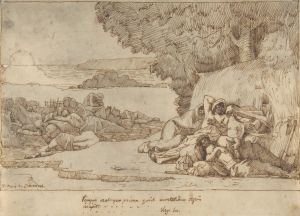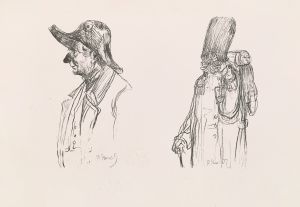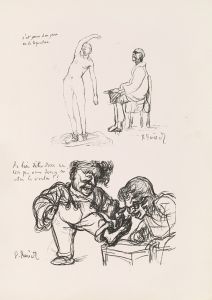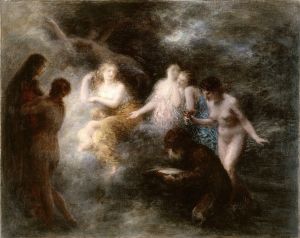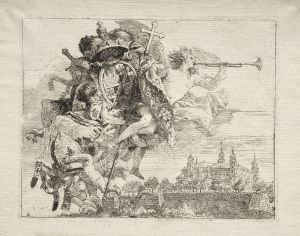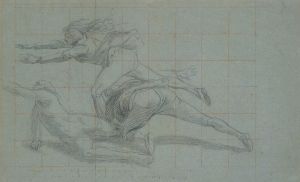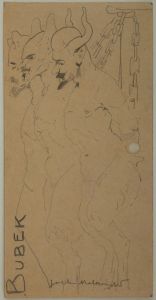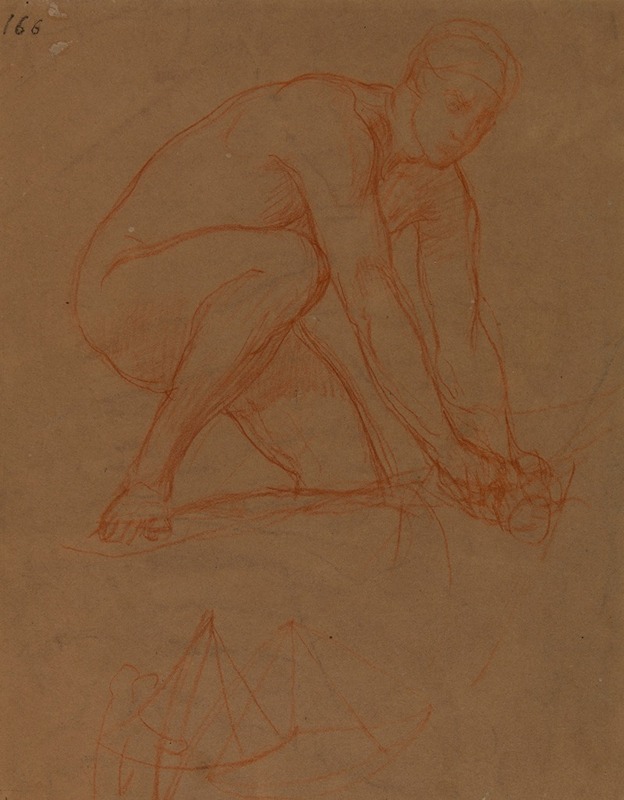
Homme nu accroupi et étude de carrelet
A hand-painted replica of Pierre Puvis de Chavannes’s masterpiece Homme nu accroupi et étude de carrelet, meticulously crafted by professional artists to capture the true essence of the original. Each piece is created with museum-quality canvas and rare mineral pigments, carefully painted by experienced artists with delicate brushstrokes and rich, layered colors to perfectly recreate the texture of the original artwork. Unlike machine-printed reproductions, this hand-painted version brings the painting to life, infused with the artist’s emotions and skill in every stroke. Whether for personal collection or home decoration, it instantly elevates the artistic atmosphere of any space.
Pierre Puvis de Chavannes was a notable French painter in the 19th century, renowned for his mural paintings and his influence on the Symbolist movement. One of his works, "Homme nu accroupi et étude de carrelet," showcases his distinctive style and thematic interests. This artwork, which translates to "Crouching Nude Man and Study of a Fishing Net," reflects Puvis de Chavannes' fascination with the human form and his ability to convey a sense of timelessness and universality.
Puvis de Chavannes was born on December 14, 1824, in Lyon, France. He initially pursued a career in engineering, but after an illness, he shifted his focus to art. He studied under several artists, including Eugène Delacroix and Thomas Couture, but eventually developed his own unique style that set him apart from his contemporaries. His work is characterized by its simplicity, muted color palette, and emphasis on harmony and balance.
"Homme nu accroupi et étude de carrelet" is a study that highlights Puvis de Chavannes' interest in the human body and its interaction with the environment. The painting depicts a nude male figure in a crouched position, accompanied by a study of a fishing net. This juxtaposition of the human form with an everyday object reflects Puvis de Chavannes' ability to find beauty and significance in ordinary scenes. The crouching figure is rendered with a sense of grace and poise, emphasizing the natural elegance of the human body.
Puvis de Chavannes often drew inspiration from classical themes and sought to create works that transcended the specificities of time and place. His paintings frequently evoke a sense of calm and serenity, inviting viewers to contemplate the deeper meanings behind the imagery. In "Homme nu accroupi et étude de carrelet," the simplicity of the composition and the subdued color scheme contribute to this meditative quality.
Throughout his career, Puvis de Chavannes received numerous commissions for public murals, which allowed him to explore large-scale compositions and complex allegorical themes. His work had a significant impact on the development of modern art, influencing artists such as Paul Gauguin and the Symbolists. Despite his success, Puvis de Chavannes maintained a humble demeanor and was known for his dedication to his craft.
While "Homme nu accroupi et étude de carrelet" may not be as widely recognized as some of his larger mural projects, it remains an important example of Puvis de Chavannes' artistic vision and his ability to capture the essence of the human experience. The painting exemplifies his skill in rendering the human form with sensitivity and precision, as well as his talent for creating compositions that resonate with viewers on an emotional level.
Pierre Puvis de Chavannes passed away on October 24, 1898, in Paris, leaving behind a legacy that continues to inspire artists and art enthusiasts alike. His contributions to the art world are celebrated for their innovation and enduring appeal, and "Homme nu accroupi et étude de carrelet" stands as a testament to his mastery of the medium and his unique artistic perspective.





